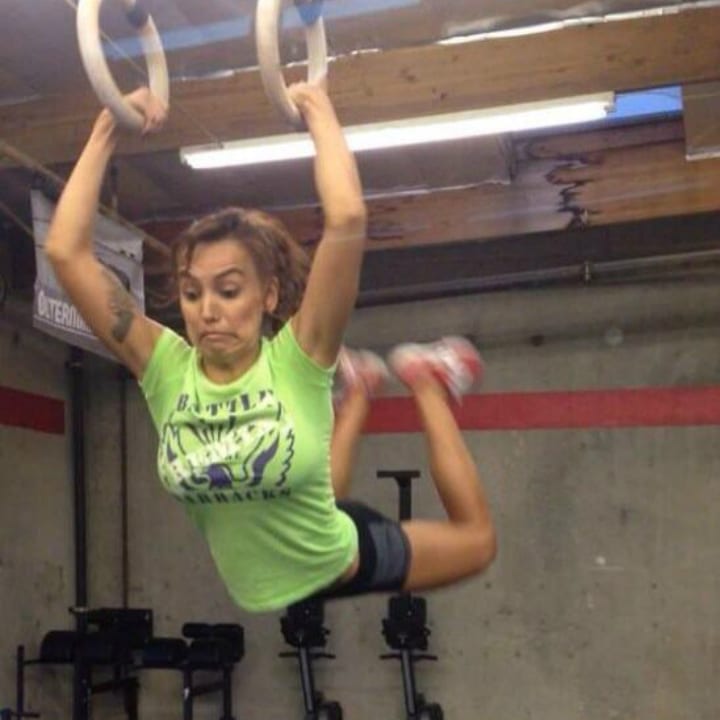
So you're killing it in the gym! Maybe you found a great CrossFit gym, or you are weightlifiting on your own. You are consistently hitting 2-5 workout days each week. You make sure to have rest days to allow your muscles to recover. Now you're ready to start increasing your weights. But, how? Increase reps, increase sets, go heavier?! There are so many options.
I recommend letting your goals show you the way. Your goals can dictate the path that's best for you:
Most training programs involve performing the bulk of your exercises in that 8–12 rep sweet spot for a few reasons.
When trying to find your starting weight, follow this program.
Using this method, you will be able to find your ideal starting weight! This will allow you to “build a base,” perfect your form, and gain confidence for weight increases to come.
Be aware of newbie gains! When you first start strength training, you’ll likely notice a more dramatic increase in strength than you will at any other point in your strength-training journey. That’s largely because during the first couple of weeks of any strength program, the bulk of your strength gains don’t come from putting on actual muscle. Those early strength gains are due to a combination of neurological changes—basically, your brain and muscles learning to work efficiently together so that the muscle cells fire and contract with more force.
What’s more, each person has a different upper limit to how much strength their bodies can gain.
So no matter what your training experience is, knowing when you’re ready to increase weight is as simple as counting reps and watching form. If you are finishing your sets and feel like you could have done 3-4 more reps with no problem, it's probably time to start thinking about an increase.
If you are ready to increase, then your goals will again tell you how.
One important note: If you feel like you are ready to make weight increases with deadlifts and squats before you’re ready to make weight increases with triceps extensions or biceps curls, don’t worry. That’s natural. Many people tend to be stronger on lower-body exercises, at least initially. You will likely see faster weight increases with compound, multi-joint lifts such as squats, bench presses, rows, and deadlifts than with single-joint isolation ones such as leg extensions, triceps extensions, and hamstring curls.
It’s best to look at weight increases in terms of a percentage of the weight you’ve been lifting. For example, going from 5 to 10 pounds with shoulder raises might be the same jump in poundage as going from 100 to 105 pounds with deadlifts, but one requires doubling the weight while the other accounts for a 5 percent increase in weight. Generally, you should limit week-to-week weight increases for any given lift to no more than 10 percent.
Sometimes the weights available to you might mean you have to make a larger increase if you want to increase at all. In that case, always listen to your body, pay attention to your form, and cut your reps accordingly so that you can get through them all without breaking form.
In fact, it’s totally normal to start using a heavier weight and then not be able to quite hit the top of your rep scheme at first. In a few weeks, you will be able to, and then you can up your weights again. For example, if you were doing 3 sets of 12 reps of overhead presses, you may only be able to handle 3 sets of 10 reps when you bump up the weight. If you’re still in that 8–12 rep range, that’s totally fine, and in time you’ll be back to feeling like 12 reps is easy and you'll be ready to once again increase the intensity.
Lifting more weight can be awesome, but lifting too much increased weight comes with some unwelcome side effects. The big one is delayed-onset muscle soreness, or DOMS. Each time you increase the amount of stress you put on a muscle, more microscopic damage occurs within the muscle cells, leading to an uptick in pain during the 24 to 72 hours following your workout as the muscle repairs itself. However, just because DOMS hurts - that doesn’t mean it’s necessarily bad. It’s a normal part of your body recovering from the stress of lifting.
Also, beware of the dangers of our human ego. It can be tempting to get so caught up in moving more weight that you start to break down in your form. Never sacrifice form to lift more weight. This is the quickest path to injury.
So there you have it. Follow these rules to safely increase those gains:

We're living in a crazy time right now. Maybe you used to have a solid exercise routine, maybe you haven't been in the gym since Hammerpants were in style. Either way, it's likely the pandemic has gotten in the way of your exercise goals.
Many of us find ourselves wanting to Get Back to our regular exercise routine, or maybe we are just trying to Start an exercise routine for the first time. In both of these situations, it's important to think about scaling our return to exercise.
When you are trying to plan out a return to exercise, I have 3 Main Tips to help you be successful.
1: Start Small
Especially if you used to exercise regularly, this one gets a lot of people. People who used to exercise quite regularly tend to design their workouts for their past selves.
That approach can really sabotage you - as it will usually lead to extreme muscle soreness or even injury. You'll want to give yourself the most opportunity to succeed.
Start small. Set your initial workouts at no more than 45 minutes each and no more than 3 days a week. You don't want to do more than this, so that your body has a chance to acclimate to the new demands.
This leads us to my second point.
2: The 10% Rule
Scientists have studied a lot of athletes of different kinds to see the safest way to increase your workouts. They've looked at runners adding mileage; they've looked at weightlifters increasing their weights; and they also studied other types of athletes who were increasing the difficulty of their workouts.
Whenever you start working out at the gym, your muscles adapt pretty quickly, within a week or two. However, the other soft tissues of the body take longer. Your ligaments and tendons can take 4 to 6 weeks to adapt to increased loads.
Tell yourself to enjoy the process of slowly increasing the capabilities of your body, and forget the quick fixes or fast results. That's not the way our body works. Slow and steady wins the race every time. This takes me to my final tip.
3: Rethink Your Ideas About Cardio
For a long time the general thinking was: If you want to lose weight, you need to do steady-state cardio. Maybe this was running out on the streets, running on a treadmill, doing a stationary bike, etc.
This thinking has been shown to be very untrue. Resistance exercise really has way more benefits than anything that steady-state cardio can offer. If your goal is to get stronger, resistance exercise will get you there. If your goal is to lose weight, high-intensity interval resistance exercise will get you there. If your goal is just maintenance of your abilities, resistance exercise will get you there.
There's nothing wrong if you want to warm up with some running on a treadmill or a stationary bike, but take my advice, and add resistance exercise into your workouts. You'll be glad you did. Some of the benefits include:
So there you have it. These are my recommended steps to make returning to exercise, or starting it for the first time ever, go as smoothly as possible.
So good luck, you got this! And here's to more success in the gym with fewer injuries!